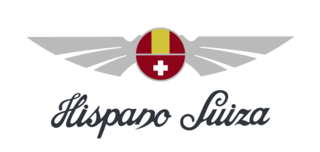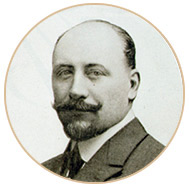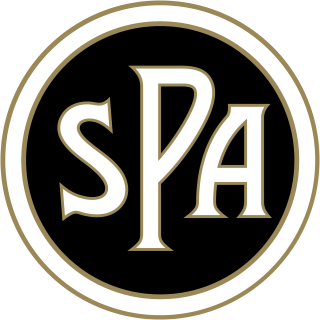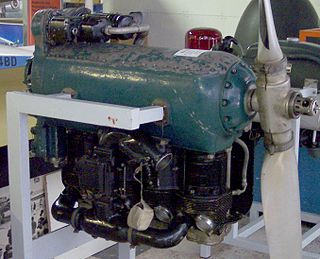
Hispano-Suiza is a Spanish automotive company. It was founded in 1904 by Marc Birkigt and Damián Mateu as an automobile manufacturer and eventually had several factories in Spain and France that produced luxury cars, aircraft engines, trucks and weapons.

NSU Motorenwerke AG, or NSU, was a German manufacturer of automobiles, motorcycles and pedal cycles, founded in 1873. Acquired by Volkswagen Group in 1969, VW merged NSU with Auto Union, creating Audi NSU Auto Union AG, ultimately Audi. The name NSU originated as an abbreviation of "Neckarsulm", the city where NSU was located.

Marc Birkigt was a Swiss engineer, automotive and aviation pioneer, and co-founder of Hispano-Suiza in 1904.
The Abadal was a Spanish car manufactured between 1912 and 1923, named after Francisco Abadal. Considered a fast luxury car, it was closely patterned on the Hispano-Suiza and offered in two models. One had a 3104 cc four-cylinder engine while the other had a 4521 cc six-cylinder engine.

The Arden was a British automobile manufactured from 1912 to 1916 in Balsall Common, near Coventry. Starting out as a light and somewhat crude cyclecar, by the time production finished four years later, it had grown into a well-made four-cylinder car, featuring full four-seater coachwork.

L'Aster, Aster, Ateliers de Construction Mecanique l'Aster, was a French manufacturer of automobiles and the leading supplier of engines to other manufacturers from the late 1890s until circa 1910/12. Although primarily known as an engine mass manufacturer the company also produced chassis for coach-works and a complete range of components.

S.P.A. was an Italian automobile, military vehicle and aero-engine manufacturer founded in Turin by Matteo Ceirano and Michele Ansaldi. It was active between 1906 and 1926. In 1908, it merged with Fabbrica Ligure Automobili Genova (FLAG) and the new company, Società Ligure Piemontese Automobili, was headquartered in Genoa while manufacturing in Turin.

Delage is a French luxury automobile and racecar company founded in 1905 by Louis Delâge in Levallois-Perret near Paris; it was acquired by Delahaye in 1935 and ceased operation in 1953.
The Lanchester Motor Company Limited was a British car manufacturer in active trade between 1899 and 1955. Though the Lanchester Motor Company Limited is still registered as an active company and accounts are filed each year, the marque has been dormant since. As of 2014 it is marked as "non-trading".

The Knox Automobile Company was a manufacturer of automobiles in Springfield, Massachusetts, United States, between 1900 and 1914. Knox also built trucks and farm tractors until 1924. They are notable for building the very first modern fire engine in 1905, and the first American vehicle with hydraulic brakes, in 1915.

Established in 1901, Belsize Motors was based in Clayton, Manchester, England. The company was founded by Marshall & Company and took its name from their Belsize works, where they had built bicycles.

Itala was a car manufacturer based in Turin, Italy, from 1904 to 1934, started by Matteo Ceirano and five partners in 1903.

The Mitsubishi Model A is the only car built by the Mitsubishi Shipbuilding Company, a member of the Mitsubishi corporate group which would eventually evolve into Mitsubishi Motors, and the first series production automobile manufactured in Japan. It was the brainchild of Koyata Iwasaki, Mitsubishi's fourth president and the nephew of founder Yataro Iwasaki, who foresaw the vast potential of motorized vehicles and the role they would play in the economic development of Japan. Envisioned as a luxury vehicle for high echelon government officials and top executives, the Model A had to be reliable, comfortable, and a showcase of Japanese craftsmanship. After the war in 1964, Mitsubishi would use this approach again to build an exclusive sedan for government officials and top level executives with the Mitsubishi Debonair.

The Elizalde Tigre IV, also known as the ENMA Tigre IV, is a Spanish four-cylinder inverted air-cooled engine designed and built by Elizalde SA shortly after the Spanish Civil War.

Fafnir was a German engine and vehicle manufacturer based in Aachen (Prussia). They made a range of cars between 1908 and 1926.
Two Brass era automobiles named Richmond were produced in Richmond, Indiana. A Steam car was made by the Richmond Automobile Company in 1902 and 1903. The Wayne Works produced the Richmond automobile from 1904 to 1917.

In 2015 Spain produced 2.7 million cars which made it the 8th largest automobile producer country in the world and the 2nd largest car manufacturer in Europe after Germany a position in the ranking that it was still keeping in 2024. Approximately 80% of that production is for export. During the first half of 2016, with exports valued over 24 billion euros over that period, the automotive industry accounted for 18.9% of the total Spanish exports.

The Markranstädter Automobilfabrik is a former producer of automobiles from Markranstädt, Germany, which was active between 1909 and 1923.
The Ferrari flat-12 engine family is a series of flat-12 DOHC petrol engines produced by Ferrari from 1964 to 1996. The first racing Ferrari flat-12, the Mauro Forghieri-designed Tipo 207, was introduced in the Ferrari 1512 F1 car in 1964. Later flat-12 racing engines were used in Ferrari Formula One and sports racing cars from 1968 until 1980, including the 212 E Montagna, 312 B series, 312 PB and 312 T series. The roadgoing flat-12 engines were introduced with the 365 GT4 BB and were produced in various versions until the end of F512M production in 1996.

Automobili Nazzaro was an Italian manufacturer of automobiles from 1911 to 1916, and 1919–1923. Founded by racing driver Felice Nazzaro it produced circa 490 vehicles in total and won both the 1913 and 1920 Targa Florios in Sicily.
















